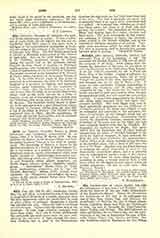

Aisle (Lat. ala; Old Fr. aile), sometimes written Isle, Yle, and Alley; in architecture one of the lateral or longitudinal divisions of a church, separated from the nave (sometimes called the center aisle) by rows of piers, pillars, or columns. Sometimes a church has one side-aisle only. Often the aisle is continued around the apse. Occasionally the aisles stop at the transepts. In very large churches transepts may have three aisles. As a rule in Gothic architecture the aisle-roofs are much lower than the nave roof, allowing the admission of light through the clerestory windows, but in most of the Romanesque churches the aisle-roofs are but little lower than that of the nave. The aisle is generally one story, but occasionally there is an upper story, sometimes used as a gallery. As a general rule, churches are divided into three aisles, but there is no fixed rule that governs the number. The cathedrals at Chichester, Milan, and Amiens have five aisles; Antwerp and Paris seven. The most remarkable in this respect, the cathedral of Cordova in Spain, has nineteen. Aisles existed in the Roman basilicas, and in the majority of Christian churches of all periods. Transepts were sometimes called the cross isle or yle. The term is popularly used to describe the passage between pews or seating.
THOMAS H. POOLE

